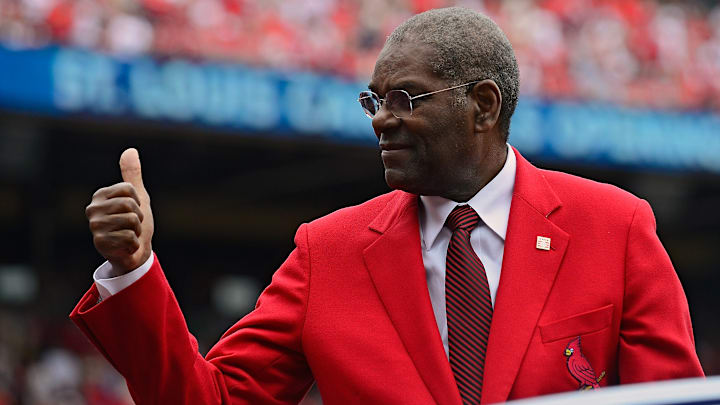Those who came close, but fell short (1990-2023)
While many remember Sutter as the most dominant reliever in Cardinal history, it was actually Lee Smith who came closest to winning a Cy Young Award. He finished just behind Tom Glavine in 1991. His 47 saves led the league, though they weren't quite enough to put him over the top. Smith did finish ahead of Glavine in MVP voting, placing eighth. He followed up his dominant 1991 season with a fantastic 1992, finishing fourth this time around. One spot ahead of Smith was his teammate, Bill Tewksbury, who deserved much more consideration than he received. His excellent season was not enough to stop Greg Maddux from winning the first of his four consecutive Cy Young Awards.
In 1996, Maddux was supplanted by teammate John Smoltz, who was challenged by Andy Benes. Benes, pitching in just his first season as a Cardinal, finished third in Cy Young voting in 1996, nearly bringing it home. Coming off of a disastrous stint in Seattle, Benes rediscovered his form and pitched well in St. Louis, becoming a fan favorite. A pair of Cardinals, Daryl Kyle and Matt Morris finished in the top five several years later, in 2000 and 2001, respectively. It was during this time that Randy Johnson embarked on his dominant four-year stretch in Arizona.
Over the past 15 years, just a few Cardinals have garnered legitimate Cy Young support. One was Adam Wainwright who nearly won the award in 2009. Wainwright led the NL in wins and innings pitched, though he ultimately finished third in Cy Young voting, behind Tim Lincecum and Chris Carpenter. Surprisingly, it was Wainwright who received the most first-place votes. He and Carpenter both finished several spots ahead of Lincecum in MVP voting. Many believe that the teammates split the vote, allowing Lincecum to snag the award.
The beloved "Waino" came close again the following season, this time finishing second behind Roy Halladay. Wainwright's slightly lower ERA was not enough to convince voters to overlook Halladay's impressive resume. Wainwright made yet another bid for the award in 2013, this time finishing second to a young Clayton Kershaw. Wainwright's final serious run for the Cy Young Award came in 2014, when he finished third, this time behind Johnny Cueto and the ever-dominant Clayton Kershaw. Kershaw captured the MVP that season, underscoring just how dominant he was. Wainwright's season was excellent in its own right, but Kershaw was clearly the superior pitcher. Wainwright started 2015 with an incredible stretch, pitching to a 1.61 ERA in four brilliant starts, but was lost for the vast majority of the season after tearing his Achilles tendon. This devastating turn of events ended his run of dominance and may have cost him his final chance at a Cy Young Award.
After Wainwright, both Jack Flaherty and Miles Mikolas enjoyed productive seasons. Spurred on by an incredible second half in 2019, Flaherty nearly became the third Cardinal to win a Cy Young Award but was foiled by Jacob deGrom. Just last season, Sandy Alcantara won the first Cy Young Award of his young career, and in 2023, Zac Gallen will certainly have a chance to do so in Arizona. Both were developed at least in part by the Cardinals system, though they were shipped out in the Marcell Ozuna trade. At the moment, the Cardinals lack a truly dominant pitcher capable of going out and winning a Cy Young, though that could change, considering the vast stable of intriguing arms they possess in the lower levels of the minors.
And there you have it. A long-winded history of excellence, satisfaction, and futility. The Cardinals are one of baseball's premier franchises. They've got 11 titles and tons of MVP winners. Unfortunately, they've struggled to develop legitimate Cy Young caliber talent, and those that have reached their ceilings have been foiled by injuries, circumstances, or other players. Hopefully, this futility will change in the future, but it seems that the Cardinals will struggle to add to their Cy Young Award total in the near future.
